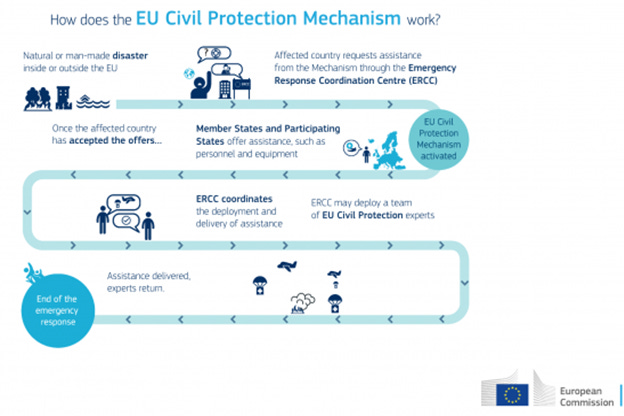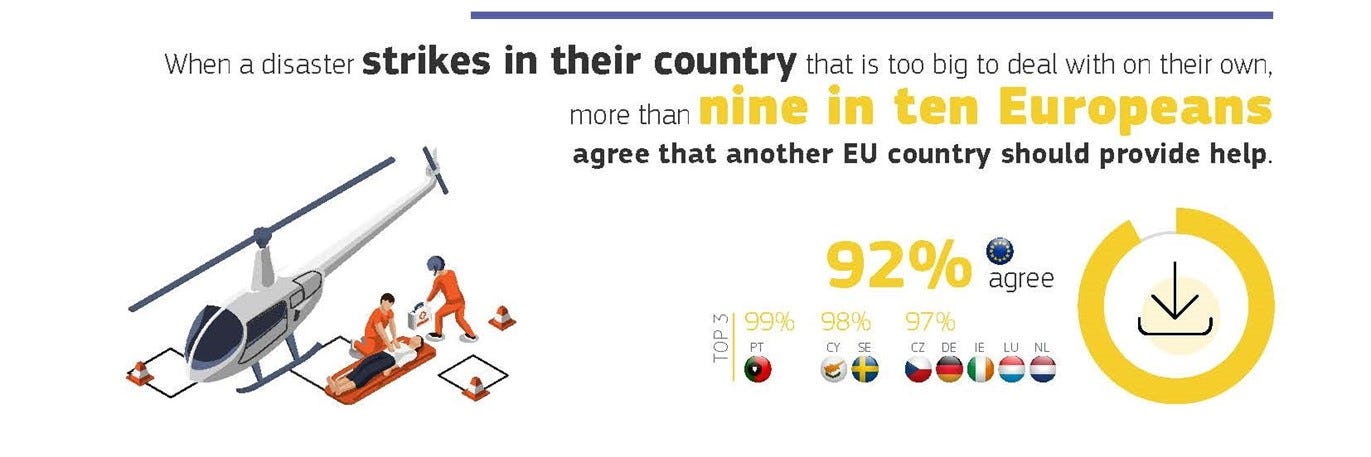Relevant EMINT Content from The National Security Policy and Analysis Organization at American Public University
The National Security Policy and Analysis Organization (NSPAO) facilitates critical engagement in national security, international affairs, and intelligence issues by engaging with national security experts and promoting an informed exchange of ideas to develop analytical skills and produce meaningful analyses relevant to the defense community. The CEMIR provides Emergency Management Intelligence (EMINT) analysis to the NSPAO. This is one of those tradecraft pieces.
As part of a standard “SWOT” Analysis – Strengths, Weaknesses, Opportunities, and Threats – the aspect of Collaboration is an important set of Strengths that can enhance the Planning, Organization, Equipment, Training, and Exercising (POETE) to reduce or eliminate Threats and Risks for any country’s Emergency Management practitioners: Emergency Managers. Every country must have all-hazards Disaster Readiness (aka resiliency) – along the standard path of Protect/Prevent/Prepare, Respond, Recover and Mitigate – must include partnerships with other countries. Equipment, supplies, tools, and techniques delivered to and from the military and civilian intelligence agencies can assist Emergency Management practitioners at all levels of government. It is crucial that Emergency Managers understand the risks of any threat – and the possibility of adverse impacts to not only the communities they serve but to their own workforce (inclusive of all incident command and control structures) and those of allied partners.
EUROPE PREPARES FOR CRISIS MANAGEMENT
The European Parliament has voted for strengthening the role of the European Union (EU) in crisis management through a legislative revision of the EU Civil Protection Mechanism. This allows for faster and more effective European solidarity operations in response to large-scale emergencies or disasters that affect several countries at the same time. The EU will have at its disposal additional financial means for civil protection and will strengthen emergency tools such as the rescEU medical reserve of protective equipment.
European Commission, 2021 April 27, https://ec.europa.eu/commission/presscorner/detail/en/IP_21_1940
This agreement between European Union (EU) nations can assist Emergency Management practitioners in the EU in all the disaster readiness phases. This intelligence form also applies to the Response Phase Incident Action Planning, which should be delivered to Unified Command for continuous Situational Awareness.
New EU Civil Protection features
During the COVID-19 worldwide pandemic, EU nations have experienced the same shortages of Personal Protection Equipment (PPE) as in other nations, including the United States. Their rescEU program enables the Commission to procure supplies when the national capabilities and capacities cannot or do not have the capacity to do so directly. The rescEU program also provides transportation and logistics support to move these items – and the personnel to support them. This includes medical personnel, medical equipment, and therapeutics. Highlighted details on this program can be found at https://ec.europa.eu/commission/presscorner/detail/en/IP_21_1940

Copernicus: Europe’s consolidated and coordinated disaster mapping system
The Copernicus Emergency Management System (CEMS) is built from satellite imagery and geospatial intelligence and provides free access to organizations before, during, and after incidents and disasters.
For Response, they have Rapid Mapping available within hours or days of the incident.
For Recovery and Mitigation, they have Risk and Recovery Mapping, which also covers Preparedness/Prevention/Protection.
Learn more about Copernicus at this link.
Survey results indicated most Europeans support a unified and collaborative approach to crisis management.
The European Union plays a key role in coordinating national borders of civil protection activities, with over 430 EU Civil Protection Mechanism activations since 2001. This survey looks at European citizens’ attitudes towards the European Union’s activities related to civil protection, including crises such as the coronavirus pandemic, and their awareness of the EU’s coordination role in response to disasters. The survey results support the EU’s role in crisis management, with 84 % of Europeans agreeing that coordinated EU action should be increased to respond more effectively to future disasters and crises. More than 9 in 10 Europeans agree that their country should provide help when a disaster strikes in another EU country that is too big to deal with on their own, a clear sign of support for EU solidarity (European Union, 2021).


Challenges in the United States for collaboration with other countries during disasters
Challenges built into U.S. federal laws currently prevent full collaboration with other nations to support U.S. disasters. While no one would expect military forces from neighboring or allied nations, logistical support such as transporting material from one U.S. port to another is limited by law to U.S. vessels with U.S. crews (see the Jones Act). This became a counter-point by the major oil companies in 2022 during the surge in retail gasoline prices, whereby savings could be up to 10 cents per gallon, according to a report by J.P. Morgan. However, it should be noted that this nationalistic restriction does not apply to non-governmental organizations (NGOs) that support governmental disaster missions, such as the American Red Cross. As part of a worldwide network of Red Cross and Red Crescent societies worldwide, any nation’s Red Cross can ask for assistance from the International Federation of Red Cross and Red Crescent to help coordinate assistance from other nations’ societies. During Superstorm Sandy in 2012, volunteers from the Canadian and Mexican Red Cross societies came to New Jersey and New York to assist. A software platform called Ushahidi – which originated in Kenya and started out as an election results violence monitoring mapping system – was used by tech volunteers to monitor closed roads, downed trees, shelters, and even posts from stranded individuals in their homes. Accurate and up-to-date crisis mapping is crucial to effective Emergency Management Intelligence.
References
Kuman, D. K. & Xu, C. (2022, June 17). East Coast gas would only drop a dime if Jones Act lifter, says JPMorgan. Bloomberg News – Financial Post. https://financialpost.com/pmn/business-pmn/east-coast-gas-would-only-drop-a-dime-if-jones-act-lifted-says-jpmorgan
CATO Institute (n.d.), Project on Jones Act reform. Retrieved October 19, 2022, from https://www.cato.org/project-jones-act-reform
European Commission (2021, April 27), A strengthened EU civil protection mechanism endorsed by European Parliament. https://ec.europa.eu/commission/presscorner/detail/en/IP_21_1940
International Federation of Red Cross and Red Crescent Societies (2015). World Disasters Report. https://www.ifrc.org/sites/default/files/World-Disasters-Report-2015_en.pdf
European Commission (n.d.), European Civil Protection and Humanitarian Aid Operations. Retrieved October 19, 2022, from https://ec.europa.eu/echo/what/civil-protection/mechanism_en
You can view more content from the NSPAO at https://www.nspao-apus.org/